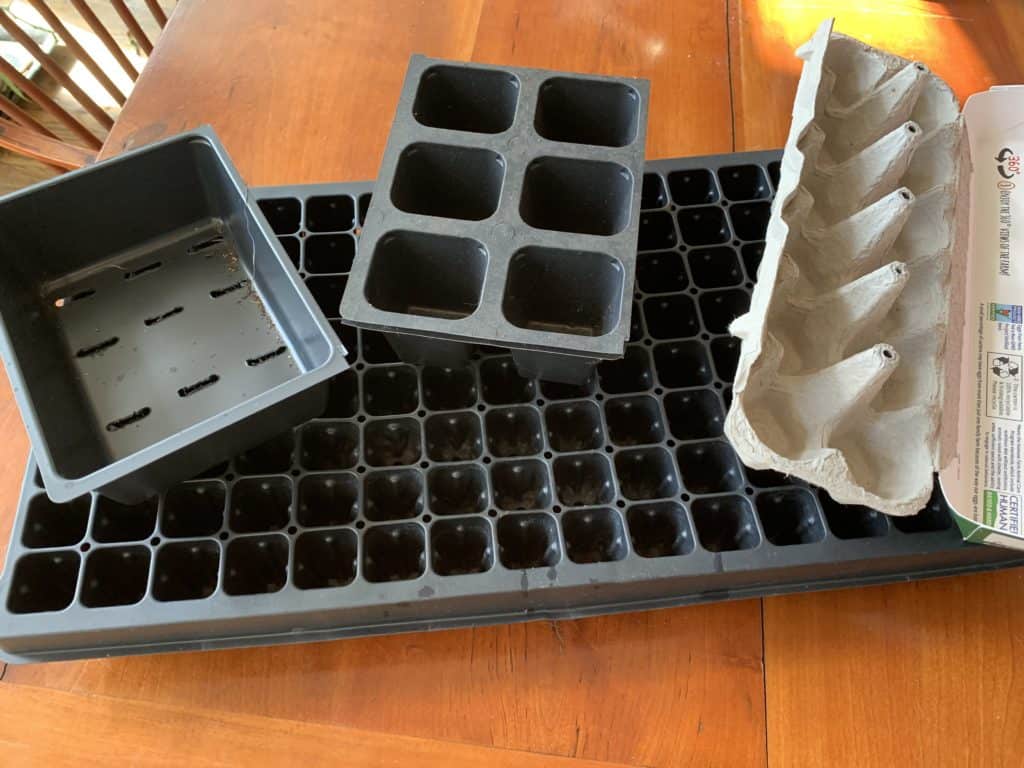Gardening for Health

Time to Start Seeds Indoors
By Maria Price
In these unthinkable crazy COVID times, starting some seeds might be one of the most reassuring activities that will confirm the continuity of life. Our last frost date has traditionally been May 15 but global warming has pushed it back to April 30. You still have to be aware of the weather though, as I have seen snow and frost as late as May 15.
In late February, you can start sowing seeds indoors. Make sure to use clean soilless media in clean containers. plug trays or small plastic pots with drainage holes. If the containers are being recycled, make sure to wash them in a 10 percent bleach solution to prevent fungal diseases. Your bleach solution should be one part bleach to nine parts water; rinse well so that no bleach remains on the pots. You can even use carry-out plastic containers with drainage holes punched in the bottom. Egg cartons also make good starter containers.
Most seeds need warmth of approximately 70 degrees to germinate. Some seeds need light or darkness to germinate. The proper planting depth is also very important. Check your seed packet information for proper planting depth. Light is also very important as not enough light will cause your seedlings to stretch, be leggy and fall over. If you don’t have good light coming in your windows, a grow light might be your answer.
About 10 to 12 weeks before last frost, usually in February, you can start slow-growing plants such as celery, eggplant, onions, rosemary, dill, endive, escarole, leeks, peppers, savory and stevia. You can start flowers such as columbines, echinacea, heliotrope, lavender, penstemon, petunias, verbena, ornamental alliums, alyssum, bee balm, carnations, cottage pinks, dusty Miller, gaillardia, lobelia, ornamental peppers, pansies, rudbeckias, salpiglossis, salvias, stock, sweet Williams, vinca and violas.
Anywhere from six to eight weeks before the last frost date, the beginning of March, you can start many herbs indoors, such as borage, catnip, chives, lemon balm, marjoram, oregano, parsley, basil, chamomile, fennel, sage and thyme. Kale, Swiss chard, bok choy, broccoli, cabbage, cauliflower, collards, kohlrabi, lettuce, radicchio and tomatoes can all be started indoors. Many flowers can be started in March such as asters, bells of Ireland, butterfly weed, calendula, castor bean, celosia, cleome, coleus, coreopsis, cypress vine, feverfew, four o’ clocks, foxglove, hollyhocks, larkspur, poppies, snapdragons, and zinnias.
Use your time indoors to prepare for a bountiful garden this spring.
